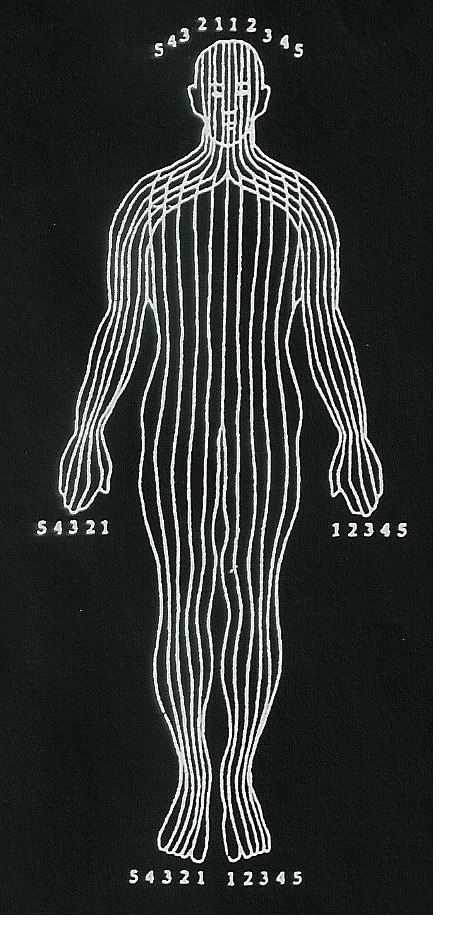Ancient History
Reflexology is an ancient hands-on healing technique known and used around the world to promote health. The practice is based on the principle that there are specific areas on the feet and hands which correspond to the organs, glands, skeletal system and other parts of the body.
The origins of reflexology can be found throughout a variety of indigenous cultures world wide. According to Inge Dougans, founder of the South African Reflexology Society and author of The Complete Illustrated Guide to Reflexology, “a widely held theory is that reflexology originated in China about 5000 years ago.” On page 49 of her book, she goes on to say “Many reputable reflexologists have stated their belief in this theory even though concrete proof is evasive.”
An on-line search will also produce references to the supposed Chinese roots of reflexology dating back as early as 4000 B.C. and involving a physician, Dr. Wang Wei, who is said to have used it in combination with acupuncture to relieve symptoms. However, the earliest documented proof of the technique stems from an ancient Egyptian pictograph, dating from around 2300 B.C. Unearthed from a sacred site known as the Physician’s Tomb, the scroll shows practitioners working with the hands and feet of receivers.
In western culture, reflexology was born out of Zone Analgesia which was discovered by Dr. William FitzGerald (1872-1929). He was a graduate of the University of Vermont, spent two and a half years at the Boston City Hospital and 2 years at the Central London Nose and Throat Hospital. He founded the Nose and Throat clinic at St. Francis Hospital in Hartford, CT.
In his research on oral pain relief, Dr. FitzGerald found teeth could be desensitized for dental operations by applying clothes pins to the tips of the fingers. The image to the left is featured on the website of the Modern Institute of Reflexology, and depicts the clothespin method of desensitizing. Rubber bands wound around the fingertips were also used as a method of desensitization.
 From this research, FitzGerald went on to discover 10 longitudinal reflex zones that traverse the body from head to toes. All 10 zones converge in the head. And stimulating any area within a zone creates effects throughout the entire zone. Zone Theory was later expanded by Dr. Shelby Riley who further specified the concept, discovering additional horizontal zones across the hands and feet.
From this research, FitzGerald went on to discover 10 longitudinal reflex zones that traverse the body from head to toes. All 10 zones converge in the head. And stimulating any area within a zone creates effects throughout the entire zone. Zone Theory was later expanded by Dr. Shelby Riley who further specified the concept, discovering additional horizontal zones across the hands and feet.
Eunice Ingham
 Dr. Riley’s work with Zone Theory then caught the interest of a physical therapist, Eunice Ingham (1889-1974). Using Zone Theory in her treatment of patients, she discovered that it went beyond simple pain relief to actually improve organ function, harmonizing the entire body system. Over time, she found and documented dynamic relationships between the reflexes of the hands and feet to the entire body. She also discovered that applying alternating pressure to these reflexes was a key to stimulating a healing response in the corresponding bodily locations. From this research, she created the copyrighted maps upon which all modern reflexology practice is now based.
Dr. Riley’s work with Zone Theory then caught the interest of a physical therapist, Eunice Ingham (1889-1974). Using Zone Theory in her treatment of patients, she discovered that it went beyond simple pain relief to actually improve organ function, harmonizing the entire body system. Over time, she found and documented dynamic relationships between the reflexes of the hands and feet to the entire body. She also discovered that applying alternating pressure to these reflexes was a key to stimulating a healing response in the corresponding bodily locations. From this research, she created the copyrighted maps upon which all modern reflexology practice is now based.
Reflexology Self Care
Though professional reflexology takes training and certification, there are many self-care techniques with which anyone can experiment. Just try taking a few minutes to massage your thumbs or big toes when you have a headache. These aspects of the hands and feet relate specifically to the head.
So relax into some easy self care. You may find unexpected tender spots. If so, stop for a moment and apply a comfortable level of pressure. Then cycle through gently increasing and decreasing the depth of contact for a minute or so. Move on to another spot and repeat the process. Odds are that by simply working with thumbs or big toes in this way, your headache will abate or completely disappear.
Introductory Training
Interested in reflexology training? Upcoming introductory classes are listed on the Continuing Education page of this website. Classes are also easily brought to your area with a minimum of six students.
Curriculum includes reflexology basics: the history, benefits, cautions and contraindications, foot and hand maps indicating reflex points, and the elements of a basic reflexology session. Then experience giving and receiving reflexology techniques that can be put into practice with clients and patients.
To schedule a reflexology lecture or class in your area, email Hallie.
Reflexology Certification
